Apple's investment of hundreds of millions of dollars into Apple Arcade is not only one of the biggest bets it has ever made to draw attention to iOS, but is certainly also its largest effort yet to promote video gaming in particular. Take a look back at the history of gaming on the Mac to see why it is necessary.
Macintosh's early lead in video gaming
It's nearly forgotten today, but back in the late '80s and early '90s, Apple's Macintosh enjoyed a favorable position in gaming — nearly by accident. That occurred despite the fact that Apple had stridently avoided promoting any of its products as a video game machine in fears of cheapening its brand image.
In the mid-'80s, Apple worked in particular to associate its new Macintosh with professional business uses, and seemed to prefer that video games were played on its more consumer-oriented Apple //c that shipped alongside the original Mac in 1984. Even so, the above ad only makes mention of"fun programs for the whole family. Like 'Genetic Mapping' and 'Enzyme Kinetics,'" while including a photo of Flight Simulator II rather than any popular adventure and arcade games of the period.
In 1986, the Apple IIGS appeared with higher resolution color Graphics than the rest of the Apple II family, and a dedicated synthesizer Sound chip at a price point well below the company's high-resolution, seriously monochrome Macs. The new model was aimed at education and fending off lower priced, gaming-centric machines like the Atari ST and Commodore Amiga, while Apple continued to portray Macs in its advertising as"straight down to business" and the"power to be your best."
Yet as Apple established Macintosh at the high-end of the market, it attracted an installed base of professional users who also happened to be interested in paying for video games, particularly titles that were novel and interesting. In 1989, Maxis released Will Wright's Sim City on the Mac before any PC version.
At the time, the Mac had an installed base not much higher than the one million reached at the end of 1987. However, those users represented a relatively affluent demographic that was accustomed to paying significant money for software.
The Mac also enjoyed clear hardware and platform advantages over DOS PCs of the time, that assisted in the development of novel, exclusive games. After the earlier, and less successful, Maze Wars, in 1991 the popular tank game Spectre debuted for Mac, making use of its simple AppleTalk networking to support multiplayer action at a time when PC networking was complicated and difficult.
In 1993 the ambitious multimedia title Myst was launched as a Mac exclusive, specifically because it used Apple's HyperCard and QuickTime to facilitate the game's navigation of CD-ROM worlds and in its pioneering use of video playback, at a time when PCs struggled to even play audio.
Wright also developed his 1993 sequel Sim City 2000 on the Mac and then ported it to still fledgling Windows. That same year Bungie Studios launched its first person shooter Pathways into Darkness exclusively for Mac, followed by its hit Marathon in 1994. Ambrosia Software launched Mac remakes of 1980's arcade favorites with Maelstrom and 1995's Apeiron. Pangea delivered gaming titles that Apple bundled with its Macs, including 1995's Power Pete and Bugdom.
Building on the differentiating success of QuickTime, Apple developed 1995's QuickDraw 3D, intended to support 3D graphics development on Macs similar to what Silicon Graphic's OpenGL was doing for higher powered workstations. QD3D's lower-level RAVE was used to deliver id's Quake and Epic's Unreal on the Mac.
However, video gaming rapidly began shifting to DOS as PC sales exploded in the early 90s while Macs remained stuck at a much smaller installed base without the critical mass to launch smash commercial hits. Microsoft hastened the Mac's demise in gaming by acquiring RenderMorphics and repackaging its Reality Lab 3D API as Windows 95's"DirectX" in 1996. The initiative helped to tie PC gaming to Windows and deflate attention for both QD3D and OpenGL.
Microsoft didn't directly reap any big revenues from DirectX, but by forcing DOS-based gaming to Windows, it helped stoke demand for Microsoft's new PC platform aimed at undermining the unique capabilities of the Mac. DirectX also set up Microsoft in a strategic position with games developers that helped it to launch Xbox as a new dedicated gaming console in 2001.
In 1996, Apple released its own Game Sprockets, a similar package of Mac APIs designed to make it easier to develop games. That same year, Apple also partnered with Japan's Bandai to release a video game console called Pippin as part of its Mac OS licensing program.
Pippin was effectively a limited PowerPC Mac intended to mostly play games, but also to serve as a simple $599 home computer. It shipped with a controller but could be used with an external keyboard and drawing pad and could connect to the internet via a modem. It was five years ahead of Xbox, but it lacked any big game exclusives and was too expensive to compete as a console while too limited to serve as a real computer.
The big Mac attack in video gaming
When Steve Jobs returned to Apple in 1997, he terminated Pippin and the rest of Mac OS licensing along with a number of initiatives that game developers had just started using, including Game Sprockets and QuickDraw 3D. This stoked a lot of angry discontent and created the impression that Apple— and particularly Jobs— hated gaming.
However, Jobs explained that he was actually listening to experienced games developers, who said they needed better graphics hardware and high-performance graphics APIs. Apple worked to implement industry-standard OpenGL graphics and charted out a plan to as quickly as possible transition from the old Mac OS to the modern, advanced foundations of NeXT's Software. After all, NeXT was such a superior set of development tools that it was not only used by Tim Berners-Lee to develop the Web, but was also picked by John Carmack and John Romero of id software to create 1992's legendary 3D shooter Doom.
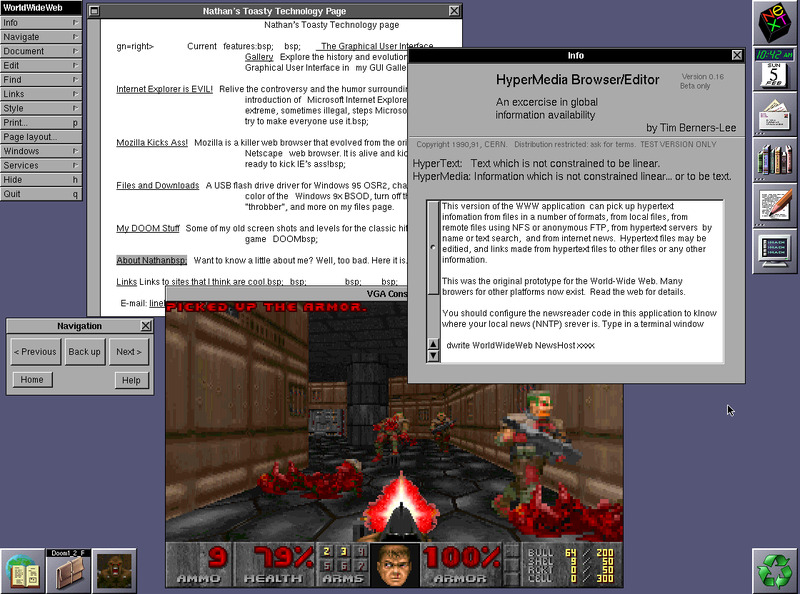 NeXT running WWW and DoomSource: Nathan Lineback Toastytech.com
NeXT running WWW and DoomSource: Nathan Lineback Toastytech.comAfter the revitalized Apple adopted OpenGL and shipped its new consumer-focused 1998 iMac with a desktop-class GPU, id's Carmack appeared on stage at Macworld Expo in 1999 and stated,"I'm here today because Apple finally has their act together with regards to 3D graphics acceleration, both hardware and software."
That same year, Jobs laid out Apple's graphics strategy and announced from the Macworld Expo stage that"we are starting to see some great games come back to the Mac, but this is one of the coolest I've ever seen," as he invited Bungie to debut its advanced new 3D shooter Halo for Mac, based on Apple's recently released support for OpenGL— the main competitor to DirectX.
The next year, however, Microsoft acquired Bungie and scuttled its Mac game. A year later in 2001 it used the game's concept to launch Halo: Combat Evolved as an exclusive launch title for its new Xbox console, providing a standout game that wasn't available on Sony's PlayStation 2, and which used the DirectX APIs Microsoft was working to make essential to gaming everywhere.
Apple lost both the Mac's biggest exclusive games studio and one of the strongest supporters of OpenGL in gaming. While the company routinely came to be portrayed as being against video games, it actually kept working to make gaming a key aspect of its new Mac OS X platform. In 2001, the company was promoting upcoming Mac OS X titles including Myst III Exile, Blizzard's Warcraft III id's Quake III: Arena and a port of Max Payne from PC.
But recruiting a critical mass of games to the Mac— and inducing developers to launch Mac titles simultaneously alongside PC versions, rather than waiting a year or more— continued to be difficult simply because the installed base of Macs was just not very large. By the end of 2007— the same year Jobs introduced EA Game's Cider-based Windows ports— Apple could only claim 25 million Mac OS X users. Those were also a mix of PowerPC and new Intel machines, further complicating the deployment of cross-platform Mac titles.
Even so, the Mac's installed base was still enough to keep Carmack interested. At WWDC 2007 he again joined Jobs on stage to show off the id Tech 5 engine at performing state of the art rendering on a Mac. It was later used to deliver 2011's Rage. At the same time, Carmack was vocal that Apple was making a big mistake holding up native gaming on iPhone in the months before Apple released an official SDK and an App Store for the new device.
iOS reclaims a stake in video gaming
The following year, when Apple"finally" opened the iOS App Store, it dramatically changed the company's position in gaming. Over the next decade, the demand for mobile games on iOS has actually changed how titles are launched. Apple's iOS chalked up a series of sophisticated exclusive hits, Including the trilogy of Infinity Blade titles from Epic Games that debuted in 2010, based on the Unreal Engine 3; Nintendo's Super Mario Run in 2016; and Fortnight Battle Royale last year.
iPhones were powerful enough to run quite sophisticated games. In 2008, Carmack stated that it was"more powerful than a Nintendo DS and [Sony] PSP combined," and nearly as powerful as an Xbox or PlayStation 2.
Every year since, Apple delivered relentless enhancements in GPU processing power and in the development frameworks to build mobile games, including features like SpriteKit for building power-efficient 2D games; SceneKit for designing 3D animated worlds; Model I/O for developing physically-based materials, models, and lighting; GameplayKit for working with artificial intelligence, pathfinding, and agent behavior of opponents; Metal for optimizing graphics and compute functions on GPUs; and of course ARKit for integrating augmented reality.
iPad also became important in establishing Apple in mobile video games since it debuted in 2010. In 2015 Apple TV 4 also introduced apps, with an emphasis on gaming. Apple shipped the revamped Apple TV with a Siri Remote equipped with an accelerometer, gyroscope, and touchpad intended to support basic gaming, with the ability to add"Made for iPhone" certified Bluetooth controllers. However, with only around 40 million devices in its entire installed base— a large chunk of which are unable to run tvOS apps— there hasn't been a strong reason for developers to pursue Apple TV gaming.
In comparison, by 2014 the installed base of Macs had grown to 80 million. This spring it surpassed 100 million. That's not only four times the size it was back in 2007, but all of those Macs today run the same Intel platform. Apple's even larger platform of over 1 billion iPhones and iPads similarly represents a consistent base of hardware using high-performance GPUs.
The video game future of Apple Arcade
Assisted by Apple Arcade subscriptions, we're likely going to see the largest bloom of video game for the Mac to ever exist later this year, along with the first major surge in Apple TV titles. Whether the types of games Apple is working to bring to the platform will dramatically increase demand for Macs remains to be seen. Gamers might also prefer to play on iPhones or an iPad Pro.
In any case, Apple Arcade appears to be existentially important for iOS to maintain its lead in gaming and to differentiate itself from Android. The stakes are also high for Apple TV and the Mac, neither of which are quite large enough platforms to stoke huge libraries of high-quality games on their own.
As an 'all you can eat' subscription service that makes cross-platform play a feature, Apple Arcade looks like like it has the potential to stand up as a new business on its own. And yet it's just one of the new Services that Apple unveiled to the media at its March event that even some developers and venture capitalists denigrated as"truly bizarre" and"the weirdest" while disparaged everything Apple presented as ranging from"silly" to"mildly pathetic."
The next article in this segment looks at Apple News+ efforts to cut through the effortless, absolute garbage that now portrays itself as public discourse to deliver a higher tier of journalism that stands out from the outrage-inducing clickbait that bloggers mercilessly shovel at us in efforts to"go viral" rather than inform.
 Daniel Eran Dilger
Daniel Eran Dilger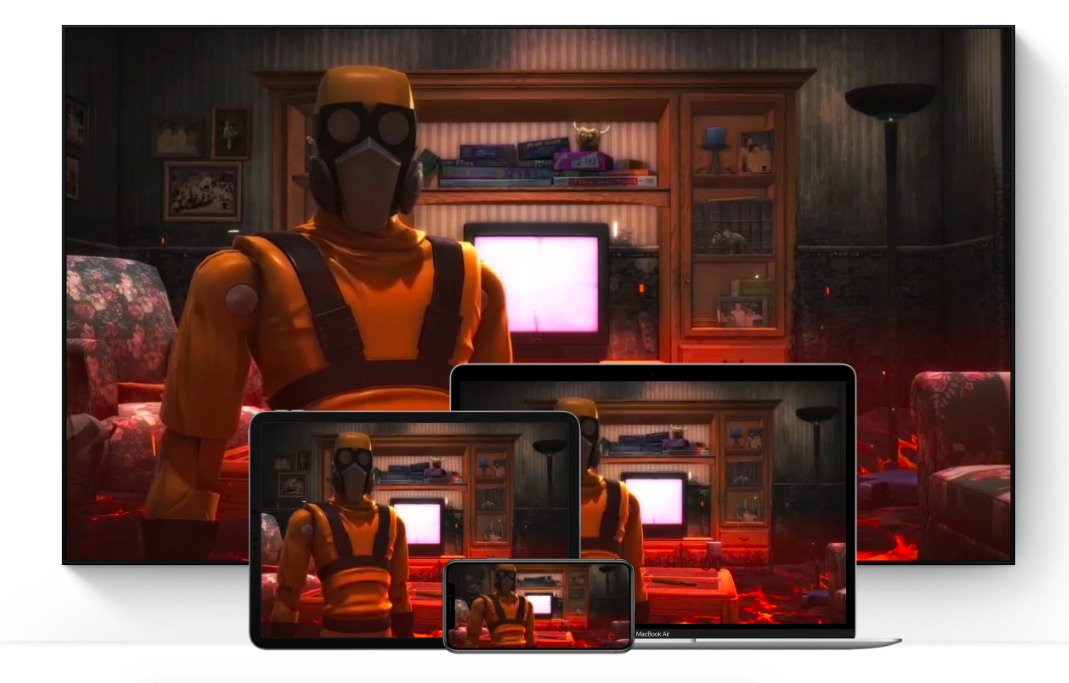
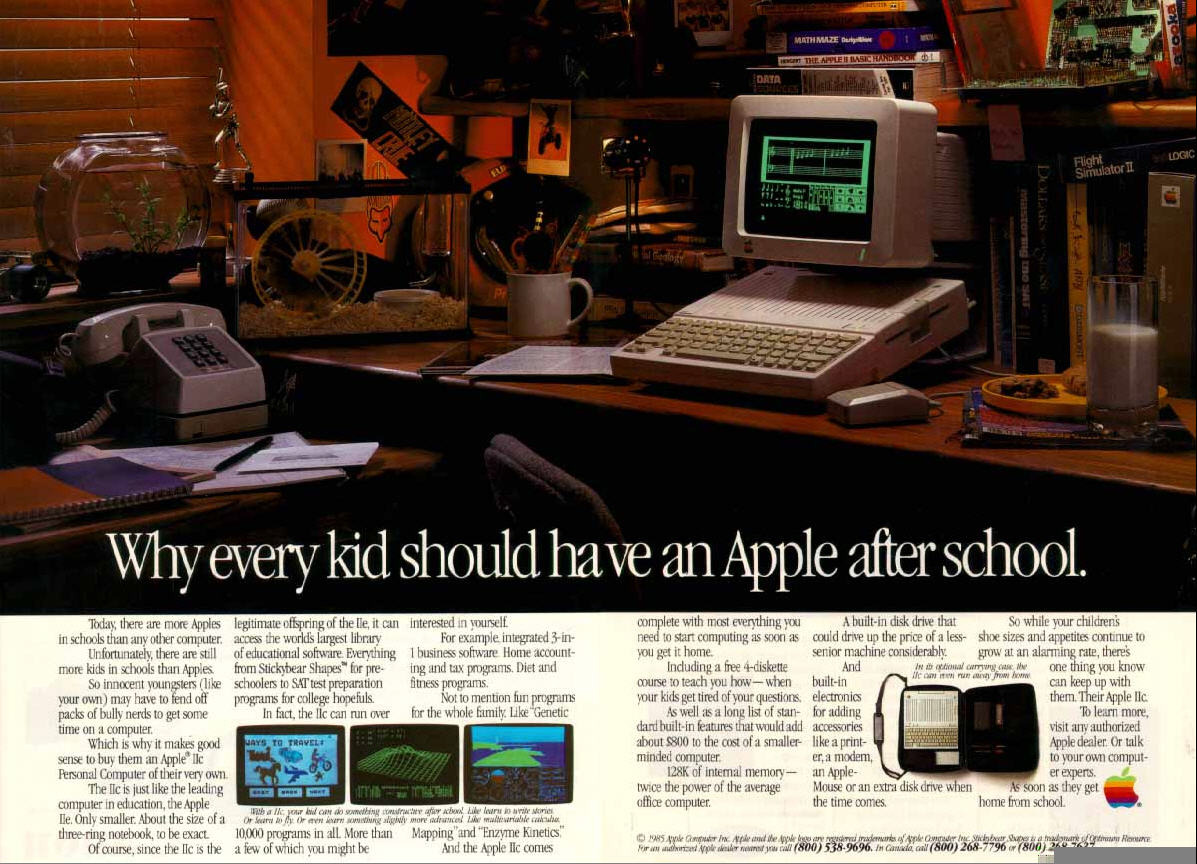
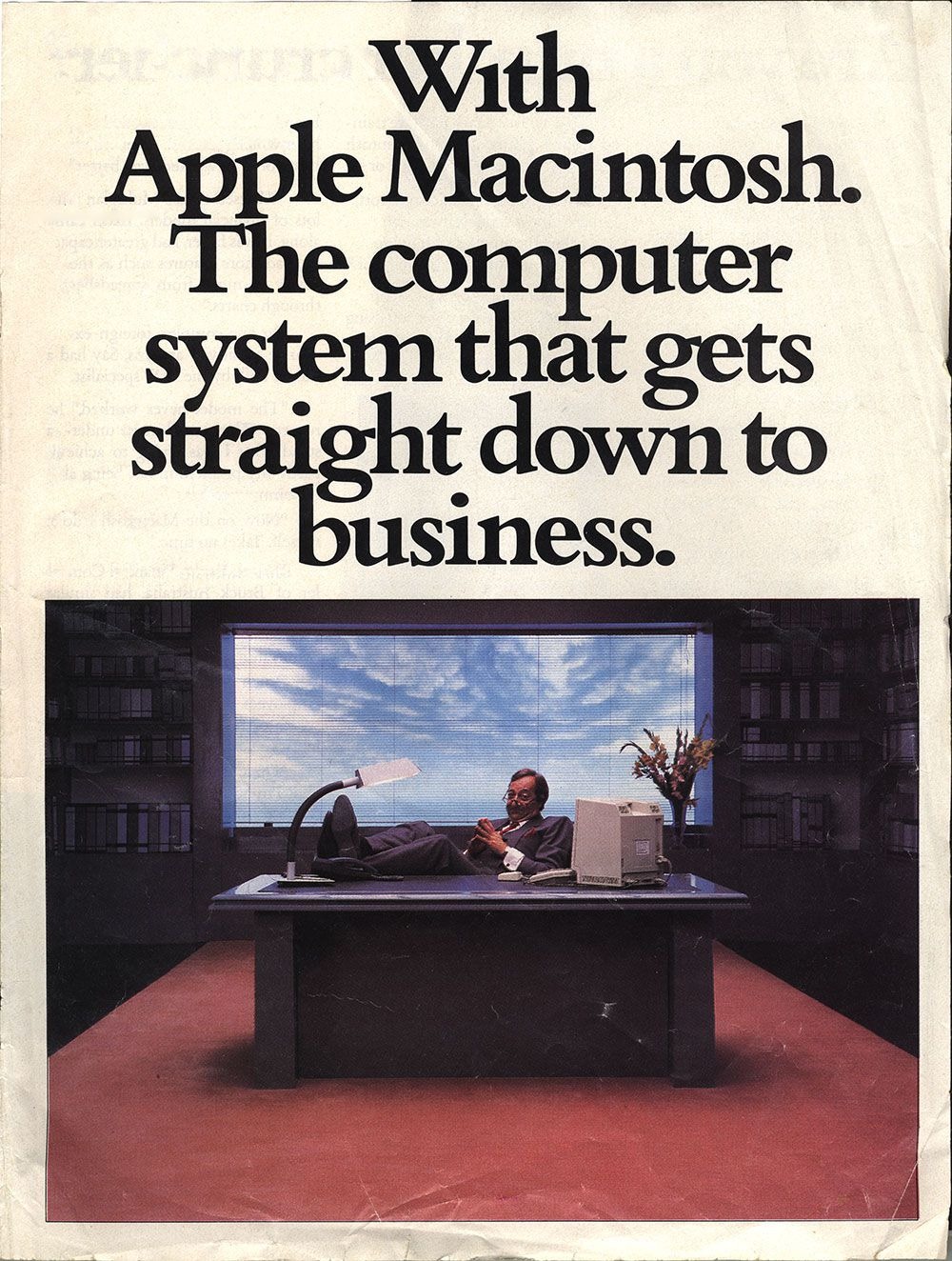










-m.jpg)






 William Gallagher
William Gallagher
 Malcolm Owen
Malcolm Owen
 Christine McKee
Christine McKee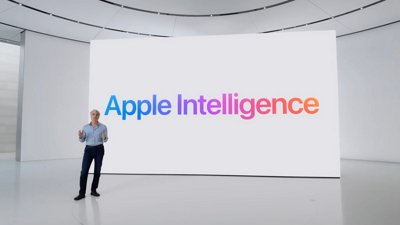
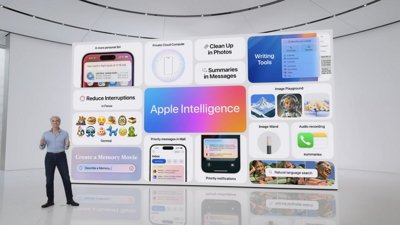
 Amber Neely
Amber Neely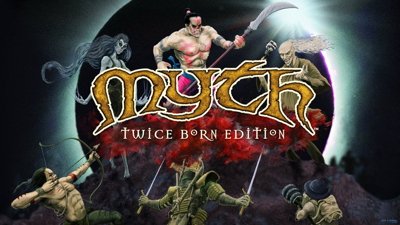
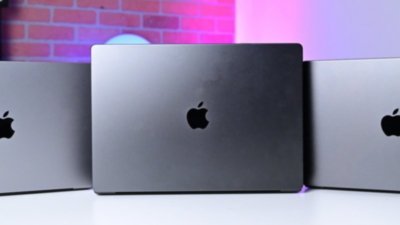
 Andrew Orr
Andrew Orr





-m.jpg)




18 Comments
Serious about games but has never created a controller?
The future of all software and games will be streaming from the cloud. All you will need is a dumb screen with a good internet connection. Google Stadia will be doing this. Whether having multiple subscriptions for software rather than on-device software is good for consumers remains to be seen, but it’s going to happen no matter how we feel about it. Companies want to move to the subscription model and services like Netflix has proven people will pay monthly.
Back in the day (Apple ][ day) they were called game paddles and they were a joystick with a couple of buttons. I always wound up using the keyboard to play games.